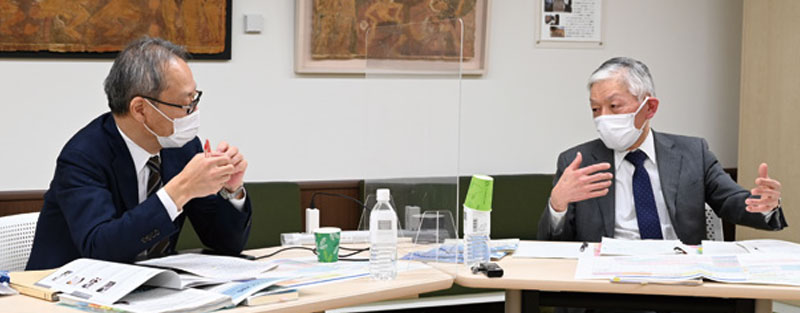
20 years of RISTEX
Dialogue #4
ARIMOTO Tateo X KOBAYASHI Tadashi
ARIMOTO Tateo is a practitioner who has been actively participating in international discussions about science, technology and innovation (STI) policy as a bureaucrat. He had served as the Director-General of RISTEX from 2006 to 2012, for nearly 7 years, during which time RISTEX's R&D management was established. He experienced the Great East Japan Earthquake as the head of RISTEX and devoted himself to the urgent call for proposals and implementation focusing on the recovery of the affected areas. He is currently a Principal Fellow at the Center for Research and Development Strategy (CRDS), JST, a Visiting Professor at the National Graduate Institute for Policy Studies (GRIPS), and a Fellow of International Science Council, committed to provide international forums and agendas that are directly linked to STI policy, and to promote international discussions about transdisciplinary research and scientific advice. In this dialogue, he pointed us to the perspectives important for future RISTEX and Japanese R&D in general, based on his many years of experience.
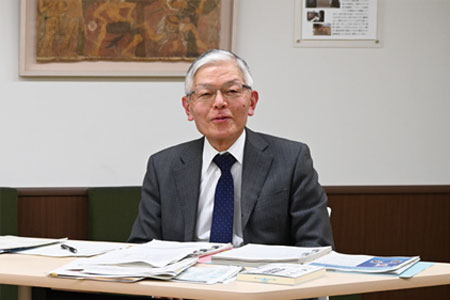
ARIMOTO Tateo
ARIMOTO Tateo is a Visiting Professor at the National Graduate Institute for Policy Studies (GRIPS) and a Principal Fellow at the Center for Research and Development Strategy (CRDS), JST. He served as the Deputy Director-General for Science and Technology Policy, the Cabinet Office, the Director-General, Science and Technology Policy Bureau, the Ministry of Education, Culture, Sports, Science and Technology (MEXT), and many more. From 2006 to 2012, he served as the Director-General of RISTEX. Major publications include: Sato & Arimoto Ch24: Japan in UNESCO Science Report, 2015; Sato & Arimoto "Five years after Fukushima: scientific advice in Japan" Palgrave Communicationsm 2016; and "The opportunity of COVID-19 to redesign our scientific advice systems" International Network for Government Science Advice (INGSA), 2020.
The 2nd Science and Technology Basic Plan, Budapest Declaration, and S&T for Society
KOBAYASHI Tadashi (KT): You are the longest serving Director-General in the history of RISTEX. 20 years ago, you were involved in formulating the 2nd S&T Basic Plan. In 1999, the Budapest Declaration was adopted in the UNESCO World Conference on Science - there indeed were some drastic changes related to science and society then.
ARIMOTO Tateo (AT): Yes. In March 2001, the 2nd S&T Basic Plan was approved by the Cabinet, of which contents had been discussed for more than a year previously in a task force of the former Science and Technology Agency. Then I was the Director in charge of the task force. In January 2001, the Council for Science and Technology Policy (CSTP) was established in the Cabinet Office, to which I was transferred, and my first job was to participate in the making of the Basic Plan. There, at the very end of the designing process, we decided to include a whole chapter on issues related to science and society. It came to materialization thanks to the works by great academics such as Professor YOSHIKAWA Hiroyuki, Professor IMURA Hiroo, and Professor ISHII Shiro. Their discussions paved the way to the establishment of RISTEX (System) as an organization for the actual implementation. It was initially based on a cooperative partnership between the Japan Atomic Energy Research Institute (JAERI) and JST, which later became integrated entirely into JST and re-established as the current RISTEX in 2005. At that time, we had to concentrate our resources on research projects, but when we had enough cases in our hand, there should have been a mechanism to systematically analyze accumulated cases at a meta-level to improve the designing of new funding programs as well as the R&D management. I am regretful that I could not set that up in RISTEX. Marking the 20th anniversary, perhaps now is a good time to reconsider such a system.
KT: You became the Director-General in 2006.
AT: When I took over from Professor ICHIKAWA Atsunobu, the first Director-General of RISTEX, he said to me that we had to discuss with scientists while also exchanging opinions with the government and citizens. As the Director-General needed to have the ability to do both, being generous was a particularly important temperament. He also said that both researchers receiving funding and the management staff at RISTEX were experiencing many difficulties as they were challenging something radically different from the conventional scientific research. So, the Director-General should always take that into account. He further asked me to make efforts in increasing the presence of RISTEX which was a novel organization. As for the practical aspect, he said that the quality and performance of a program depended on who became the Program Supervisor, so a great care should be taken when deciding who should take up this role. Finally, he said that he considered 社会技術shakai-gijutsu (social science and engineering) as a process. Being able to take over his wish for this 'process' to be given full consideration was a privilege for a practitioner such as myself.
KT: I understand that the exact procedure of deciding a research topic and designing a corresponding funding program, as well as the details of how to actually manage the program had been established whilst you were the Director-General.
AT: I think RISTEX is avant-garde as an S&T funding agency, for constantly experimenting something. It takes care of the entire process from designing, funding, managing, and evaluating, to giving back to society what have been achieved in R&D. What is more, the R&D in RISTEX engages in solving problems of local communities of which conditions, cultures and histories are different, not only as individual projects, but also as a funding program. When I was the Director-General, I attempted to analyze more than 100 projects to elucidate common methods, characteristics, and other peculiarities. There is a diagram of the three-tier structure of RISTEX, which is still used in its brochure. This is what previously mentioned Professor ISHII proposed by pointing out the similarity between RISTEX's method of R&D promotion and the three-tier circulation model of modern civil law. The diagram indicates that in the first tier, the level of individual projects, various cases are collected and in the second tier, these cases are classified to extract methodology and similarities. I believe such synthesized and generalized knowledge makes RISTEX unique compared to other JST and government wide funding programs, whilst making its methodology easily applicable to other programs. Upholding STfS means its scope is society as a whole. It is hard but it is its strength.
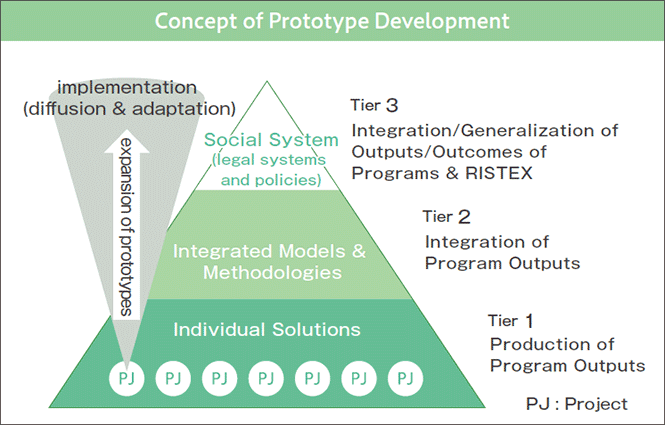
KT: It would be great, though, if we could collaborate more with other sections in JST, especially CRDS that functions as a think-tank.
AT: At the beginning, the method employed by RISTEX was not understood by others, including those in JST. Today, however, there are many funding schemes outside of RISTEX that also aim to solve social issues. I hope knowledges and methods become shared throughout JST and government agencies effectively. The same applies to the collaborative efforts with the SciREX program.*1 Perhaps (as a little joke) we should dig a hole at the entrance of JST and bury our vision of 'S&T for Society 2030,' as a gesture of our commitment to ensure this is realized by the time we compile the 30-year chronicle of RISTEX.
*1 Science for REdesigning Science, Technology and Innovation Policy (SciREX) is a governmental program that focuses on research and education for establishing evidence-based science policies (https://scirex.grips.ac.jp/en/).
To Strengthen Japan's Research Abilities
AT: The 6th STI Basic Plan boldly incorporated unprecedented values such as the social transformation and well-being. We need to be seriously committed to it. Otherwise, we will face criticisms in 5 years' time.
KT: Regarding one of the key terms, convergence of knowledge, RISTEX has in fact a history of such practice, but how could this be more widely known among the government officers?
AT: As we are entering the era of seeking sustainability, resilience, and well-being, there is a stronger need for the government to improve its capabilities. This is referred to as the 'dynamic capability' in OECD. For instance, when a Japanese researcher wins the Nobel Prize, mass media in this country tends to focus on telling stories about the laureate's families and pupils. But I think they should also look into how it was supported, particularly with institutional and financial systems that are implemented in our research community. Professor KAJITA Takaaki's research that won the prize for the discovery of neutrino oscillations was enabled with a large funding. When Professor KOSHIBA Masatoshi was awarded the Prize for detecting cosmic neutrinos, I asked Japan's Science News to write a feature article narratively about how it was made possible. At that time, Mr. HIRUMA Teruo, the president of Hamamatsu Photonics, developed supersized photomultiplier tubes (PMTs), and thus was able to install numerous PMTs underground. In addition, then Director of the former Ministry of Education accurately recognized the importance of Kamiokande. He realized that the process of examination and decision-making for large-scale academic projects then was too slow to reach a conclusion by the time neutrinos generated by a large explosion in the Large Magellanic Cloud reached the earth, so he intentionally sped up the process. Collaborative efforts by various stakeholders such as this is hardly told. However, such a story of division of labors being widely shared is extremely important - that being able to express the 5W1H, passing on the knowledge and the experiences for everyone to share and use them - should strengthen the research capabilities in Japan.
KT: The same can be said about RISTEX in terms of how it has been devising creative ways of management.
AT: When setting up a new funding program in RISTEX, I said we should organize a large workshop with a wide range of stakeholders, and when a topic of importance was identified, we should go and interview at least 100 people across the country.
KT: You are the one who made this flow of work?
KT: Once there was a question about the fairness in the project selection and to that I remember you saying "it may be so technically, but when starting a funding scheme in a novel and exploratory manner, it must be acceptable as we are trying to make something good, and I will take the responsibility for it." Logically speaking, participants of such workshops are advantageous in applying for the funding, but when creating something new with such a topic, you need to be determined to an extent. I took your words as a message to all of us and I was greatly impressed by it.
AT: There were cases where I had to push forward certain decisions by adjusting perfunctory rules so that we could achieve the objective. As a matter of comparison, Japan Society for the Promotion of Science (JSPS) is more widely known than JST in the research community as the grants are more easily attained and the funding scheme is easier to comprehend as it is the standard style adopted worldwide. Meanwhile, JST's funding is more competitive and requires more labor. And those who know RISTEX are even fewer. On top of that, RISTEX's programs cost more as it designs, manages and finishes up each program through trial and error. Funding research in a bottom-up manner like JSPS is important but promoting research that solves social issues such as the opportunities provided by RISTEX is also important, and that is costly. We need to ensure that people understand that this is an investment towards the mission-oriented STI policy.
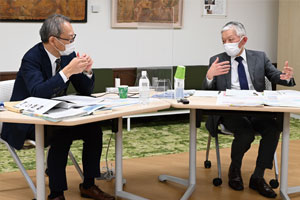
KT: The EU's Horizon 2020 enables employment of non-researchers who specialize in connecting people. Meanwhile in Japan, employing people with such talents is not a widely shared notion yet, but that too needs to be understood as a necessary investment. An aircraft flies not merely by a pilot, fuel, and the aircraft - flying is enabled by an entire system including staff on the ground. S&T is the same. In this regard, perhaps RISTEX should proclaim more of its achievement as an experienced avant-garde experimenter. Talking about RISTEX's management system, the most essential is the Program Supervisor as you mentioned earlier. What did you consider as important when you decided the Supervisor?
AT: Academic achievements, but not in a narrow sense - achievements based on a wide range of interests, knowledge, experience, and networks of people. And leadership, with broad-mindedness. Courage and determination at times. And the attitude of never taking lightly our administrative work.
KT: I see. Someone with a common sense who understands that we are equal partners with different roles.
AT: Yes, and the one who can narrate a story to which people can relate themselves.
KT: Preferably someone who can put those into words through the program.
AT: The description of calls for proposals is extremely important, too. As you point out elsewhere, while various research funds are available, it is important for both researchers and funders to be aware of exactly what each grant system is trying to achieve. Japanese funders don't have enough capability and art of interactively accompanying researchers, and I think that is a part of the reason why Japan's research capabilities are declining. That is why the description of calls for proposals is so important - what and how it is written - and researchers need to understand, act accordingly and continue to do so in the actual research management, so that the program runs appropriately even if the staff changes. For this, ensuring JST's and the MEXT's understanding is also essential.
RISTEX and the Great East Japan Earthquake
KT: I would like to ask you about the Great East Japan Earthquake, which occurred when you were the Director-General of RISTEX.
AT: As the top of the organization, I figured out that an immediate action was needed, so I urgently secured 60 million yen. With that budget the Promotion of Social Implementation of Solutions Related to the Great East Japan Earthquake program was launched. Quickly setting a specific target issue and to work on it on-site for recovery and reconstruction by organizing a collaborative research team with relevant stakeholders - with such framework, a project to recover the aquaculture in Ofunato Bay was conducted, for example. It assisted the recovery of the bay and the restoration of oyster farming by collaborating with the local fisheries cooperative and a nationwide network of technical colleges. I visited the bay frequently as a representative of RISTEX.
KT: I heard about your numerous visits. Your active participation is wondrous.
AT: Of 1,100 oyster-farming rafts, 3 survived after the tsunami, and the young oysters that remained on them grew larger every time we visited as a result of using microbubble generators, and they were large enough to be edible by February next year. This was moving. I am grateful to many of the local people, technical college teachers and students. As another episode, at the time of the Great Hanshin-Awaji Earthquake, the entrances of the temporary houses were positioned back-to-back and did not generate conversations between neighbors, which resulted in uncomfortable living environment. Based on this experience, there was a demonstration experiment in which temporary houses were situated with their entrances facing each other, and on top of that, benches were placed to induce conversations. There was a hospital which kindly examined its effect and revealed that it decreased residents' hospital visits. In another case, researchers at Tohoku University wanted to run an experiment with rapeseed at the coastal area of Sendai City, which was totally washed away by the tsunami. This was a project to examine the growth of the plants using various soil samples such as those with high salt concentrations, and to determine how the damaged soil could be improved. What impressed me was the yellow blossom carpeting the land the following spring, against the desolate large-scale disposal facilities for tsunami waste in distance. It appeared to me as a symbol of restoration.
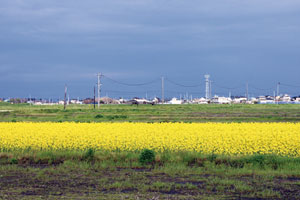
Rapeseed Project for Restoring Tsunami-Salt Damaged Farmland
Photo by courtesy of Project PI, NAKAI Yutaka
Transdisciplinary Research (TDR) and Future RISTEX
AT: In December 2011, after the Fukushima nuclear accidents, Nature published an editorial which severely criticized the lack of sound scientific advice to the government in Japan.*2 This had a great impact on the politics and prompted the reinforcement of scientific advice in Japanese policy-making led by Professor YOSHIKAWA who was the Director-General of CRDS then. As a result, many of the experiences and case studies in Japan started to be shared worldwide, and we also managed to have an article published in Science. Subsequently, I had an honor of acting as a chair of a study project that made an international comparison of scientific advice mechanism in the Global Science Forum (GSF), OECD. After this, I also chaired a study project of an international comparison of transdisciplinary research (TDR) and compiled a report. This was chaotic at first as 'transdisciplinarity' was defined differently by various experts from various viewpoints. So, we set its working definition as interdisciplinary research in S&T that transcends disciplines of natural sciences and social sciences and humanities (SSH), with engagement of various stakeholders, and collected a range of cases, one of which is RISTEX. In Japan, with your prompt suggestion, we could settle on translating TDR as 学際共創研究, literally, interdisciplinary co-creation research. After consulting OECD, we have also managed to hold an international workshop on S&T for society in Paris. Recently, we could also organize an international workshop on case studies of TDR. It attracts attention worldwide, so international networking is very important.
KT: I appreciate your insight. Lastly, may I have your words regarding the future of RISTEX? While daily work as a funding agency is of course important, I feel there should be a way to oversee the R&D outputs and to generate meta-level knowledge.
AT: We need a mechanism of collecting cases and analyzing them to identify common features, which generates meta-level knowledge that can further be developed into theories - though I think this is a structural defect of Japan as a whole. It is a process of going back and forth between individual cases and the entire picture - developing our own diverse knowledges, accumulating experiences, collecting cases, and analyzing them at a meta-level. Then converging them to design what would be required to develop a new academic discipline or to solve social issues. This is what RISTEX, or JST as a whole should do as they possess a variety of cases. From my experience as the Director-General of RISTEX, and of the involvement in the restoration of the Tohoku region, I came to realize indeed that there already existed many good cases especially in university-business cooperation. We do have our own cases, from which knowledge can be structured, and with confidence we can exhibit Japan's unique values to the world. Thus, I believe the next challenges are: to continue funding research targeting specific issues while assisting the projects all way through, to accumulate cases, to analyze cases at a meta-level, and to cultivate the skills and knowledge for designing. Balancing analysis and design is important. In other words, building up the skills both at the individual and the collective levels. Be it STI for SDGs or ELSI/RRI, proposing agendas from Japan, and organizing international discussions based firmly on actual cases rather than discussing abstract notions are extremely important. As it is relatively easy to organize online events these days, now is a chance to make and expand networks nationwide and worldwide. It would be great also to connect with networks of young researchers such as the Global Young Academy to attract their interest.
KT: I agree. Thank you very much for your insightful suggestions.
*2 Critical mass, Nature, 14 December, 2011, https://www.nature.com/articles/480291a
(Tokyo, January 14, 2022)
| 20 Years of RISTEX / S&T for Society TOP >>> | 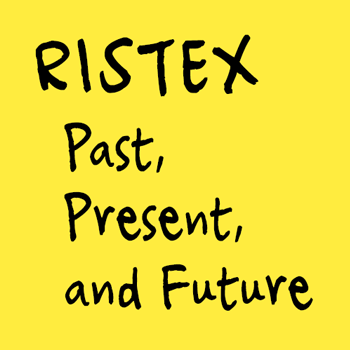 |